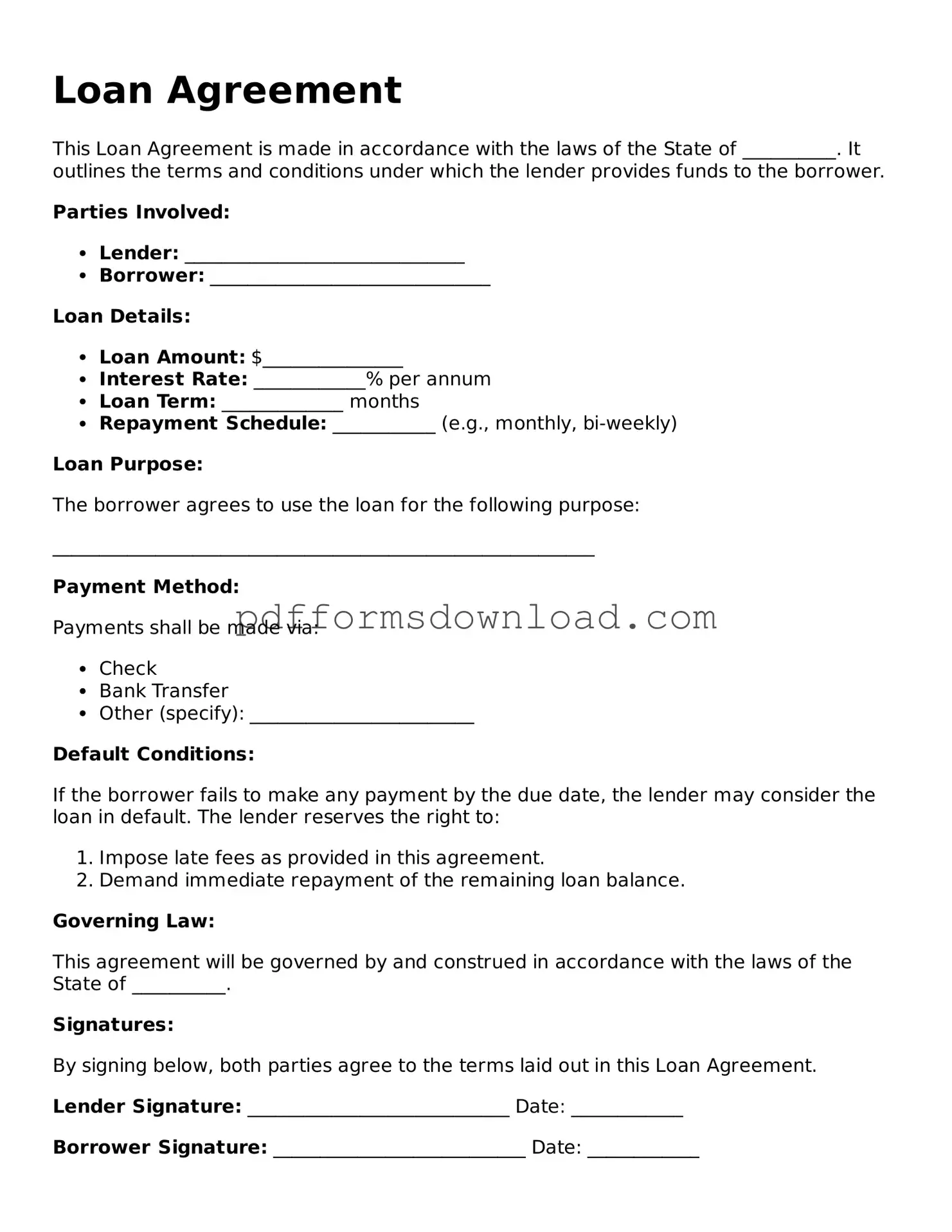What is a Loan Agreement form?
A Loan Agreement form is a legal document that outlines the terms and conditions under which one party lends money to another. It includes important details such as the loan amount, interest rate, repayment schedule, and any collateral involved. This form serves to protect both the lender and the borrower by clearly defining their rights and responsibilities throughout the loan process.
Who should use a Loan Agreement form?
Anyone who is lending or borrowing money should consider using a Loan Agreement form. This includes individuals, businesses, and organizations. Whether it's a personal loan between friends or a business loan from a financial institution, having a written agreement helps prevent misunderstandings and provides a clear record of the transaction.
What are the key components of a Loan Agreement form?
A comprehensive Loan Agreement form typically includes several key components: the names and contact information of both the lender and borrower, the loan amount, the interest rate, the repayment schedule, and the maturity date. It may also specify any fees, penalties for late payments, and conditions under which the loan may be considered in default. Additionally, it can include clauses about collateral, if applicable, and any other terms that both parties agree upon.
What happens if the borrower fails to repay the loan?
If the borrower fails to repay the loan according to the terms outlined in the Loan Agreement, the lender may have several options. These can include charging late fees, initiating collection procedures, or even taking legal action to recover the owed amount. Depending on the agreement, the lender may also have the right to seize any collateral that was pledged. It's important for both parties to understand these consequences before entering into a loan agreement.
